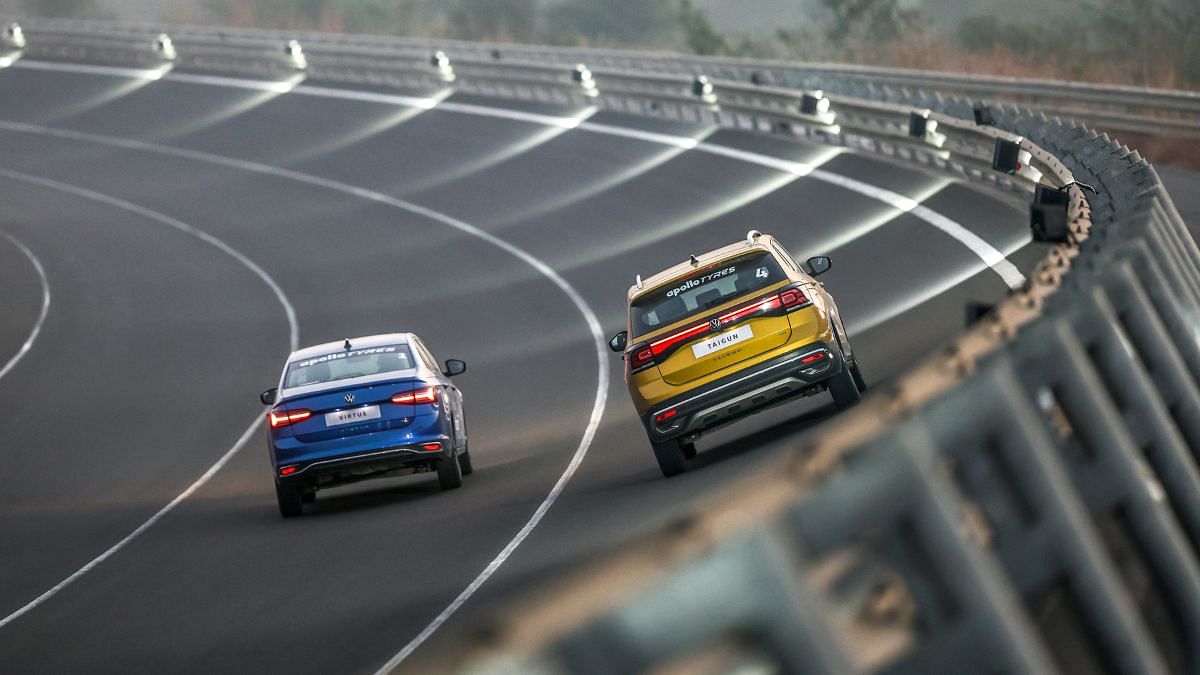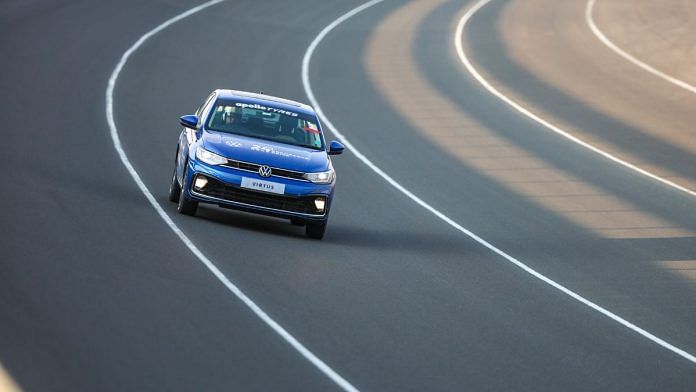When my friend Sirish Chandran, Editor of Evo India automotive magazine, called me one evening, I expected the usual industry gossip. But no—he was inviting me to an event at the National Automotive Test Tracks in Pithampur, just outside Indore in Madhya Pradesh. And not just any event—Chandran was planning a record attempt, aiming to beat the national endurance record for the maximum distance covered in 24 hours with support from Volkswagen India. The effort would involve Volkswagen’s ‘Made in India’ Virtus sedan and Taigun SUV driving flat-out for a full day and night.
Make no mistake, this is a serious undertaking. Pushing a car to maximum speed for 20+ hours puts tremendous strain on the machine. Even on long drives, you give the car breaks every few hours. And you never push the engine to its limits. Of course, no single driver can manage that duration. So, a team of four-five drivers per vehicle would rotate in shifts, usually until needing to refuel or change tyres.
To participate, I needed a national racing licence, required for record attempts. Open to anyone, licences are issued by the Federation of Motorsports Clubs of India (FMSCI), the national body recognised by the Federation Internationale d’la Automobile (FIA). For Rs 3,750, I got a four-wheeler licence in just a couple days. Then I flew to Indore early Saturday morning.
As its name suggests, NATRAX comprises test tracks for the Indian auto industry, initiated years ago by the Ministry of Heavy Industries. The tracks include an 11.36 km four-lane banked oval for sustaining speeds up to 250 kph. Banking minimises steering input at top speeds—set the angle right on a banked turn and you need no input at all.
I was assigned to Car 1 – a blue Volkswagen Virtus with a 115PS 1-litre TSI engine. We wouldn’t go for the overall record, but try to complete 24 hours on one set of tires – itself an immense strain. Forget the engine load, keeping rubber at full throttle that long is a tremendous stress test. At a time when stories of tyre-burst are common, we’d start slightly below top speed, around 180 kph, to build some confidence first with the rubber, provided by Apollo Tyres.
What’s a record run without a hiccup? By the 1pm start time, between arriving teams, briefings, photos and interviews – not to mention social media posts – we’d blown past one o’clock. The start was quickly delayed an hour. My first stint would come around 4pm as the second driver, planned for two hours fifteen minutes per shift at our slightly slower target speed. Soon the five cars were flagged off as I watched them whoosh past for the first few laps from the barriers.
Besides mine, Cars 2 and 3 were also the Virtus, in burgundy red, but with 150PS 1.5-litre TSI engines. They were gunning for the 24-hour distance record. Cars 4 and 5 were Taigun SUVs in curcuma yellow – number 4 chasing the under 1-litre record and number 5 would trundle around the bottom lane at 55 kph for a fuel efficiency benchmark. As daylight faded, the first drivers began pitting for refuelling and tire swaps. This was no Formula 1 style three-second stop; the cars were being tanked up from drums with an electric pump and having tyres changed every few stops. Soon, it was my turn behind the wheel.

My first complaint: no air-conditioning. To achieve the top speed and enhance fuel economy, the AC couldn’t be switched on as it can reduce power by as much as 2 percent. For this record, every bit of power mattered. We were, however, allowed to blast music, and I cranked the Heavy Metal through Apple CarPlay, so loudly in fact that I was chided for missing the messages on the walkie-talkie. But truth be told, the speeds weren’t that exciting; we had all driven much faster, on far more demanding tracks. This driving test was about consistency at incredible pace.
Second, the time of my drive. As the setting sunlight struck, it began to come into my eyeline and I needed to fiddle with the sun visor. But I did not lose any speed and kept the car comfortably at cruise control at 185 kph. After my stint ended, almost perfectly as the sun set, I I headed back for a shower at my Indore hotel, having managed just a couple short naps amid the anticipation since rising at 3am.
I rushed back after midnight for an unexpected early switch as the team had decided we would speed up because the tyres were holding well. As the Rabi crop in the fields around NATRAX matured, insects filled the Virtus and also the windscreen, requiring intense cleaning each time the cars rolled in. Not that they stayed clean too long.
Headlights ablaze, I set off on my ‘graveyard’ shift just below 200 kph.
I managed to take some rudimentary lap times on my phone—clocking 3 minutes 35 seconds per 11.3 km lap. One has to keep shifting their gaze to avoid tunnel vision. After I pitted, the mechanics looked at the tyres and decided we could go even faster and max out our Virtus at 203-204 kph, although actual speed as measured by the electronic timing equipment showed us at 196-197 kph. This ‘speedo error’ is a common feature on all cars.
Before my last stint, I had driven for just short of six hours and over 1,000 km. Our car was finally measured at having driven 4,357.21 km in 24 hours, on a single set of tyres but that beat the old record as well. But of course, my car wasn’t going for the record. Car 2 was to set that record 4,654.28 km, an average speed of 194 kph, a truly remarkable achievement.
Because I was part of the entire driving team, I was awarded an India Book of Records medal, which made me feel strangely proud. While I have won a couple of trophies for journalism, I hadn’t won a medal for anything since I was a schoolboy. I guess the adrenaline was mixing with serotonin as well. But now came my biggest challenge—find some cold beer to stay awake for my delayed Vistara flight.
One week on, I still can’t believe all this happened. While driving a car fast is what the job entails, this somehow felt like a proper achievement. And I’m rather proud of it.
@kushanmitra is an automotive journalist based in New Delhi. Views are personal.
(Edited by Prashant)



